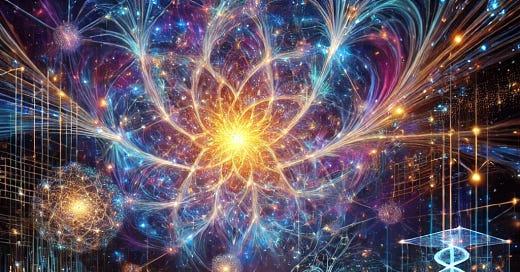Abstract
While quantum entanglement is often discussed as a linear or pairwise phenomenon, there is growing theoretical interest in the possibility that entangled systems may exhibit fractal or self-similar structure across recursive interaction layers. This article explores the speculative framework of entanglement fractals, nested, scale-invariant causal webs that could underpin the fabric of spacetime at both quantum and macroscopic levels. We examine whether artificial intelligence, particularly large-scale transformer architectures and quantum-enhanced models, could be used not merely to simulate such systems but to detect, decode, and eventually manipulate them. This new interface between AI and fundamental physics may offer a path toward deciphering nonlinear causality embedded in the geometry of reality.
Keep reading with a 7-day free trial
Subscribe to Exploring ChatGPT to keep reading this post and get 7 days of free access to the full post archives.



